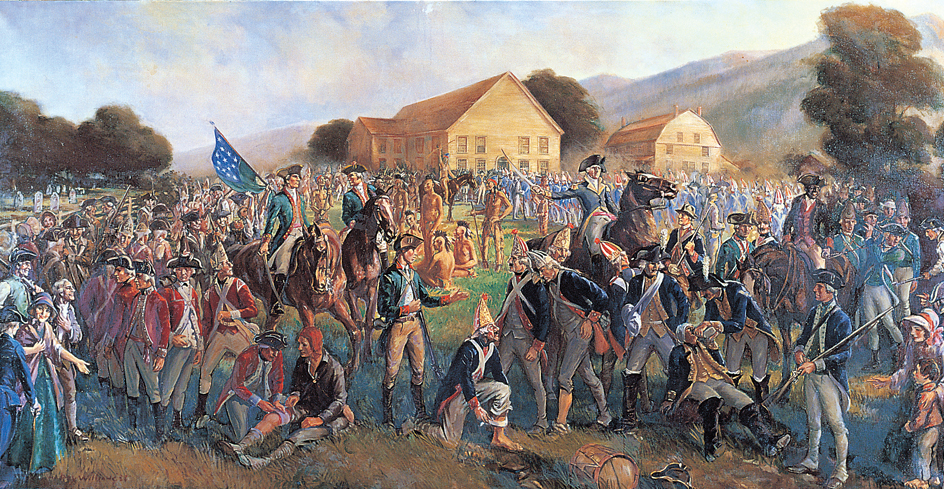Bennington, Battle of, was an important American victory during the American Revolution (1775-1783). The battle took place in New York, just west of Bennington, Vermont, on Aug. 16, 1777. Patriot Brigadier General John Stark led more than 2,000 militia in the battle. He faced about 1,300 troops of the British and their allies under the command of Lieutenant Colonel Frederick Baum. The American force consisted mainly of militias from New Hampshire and Vermont. The British force was composed mainly of professional German soldiers. It also included a number of British soldiers, Canadians, American Indians, and American Loyalists—that is, American colonists who had remained loyal to Britain.

Background.
In June 1777, British Lieutenant General John Burgoyne led 8,000 troops south from Canada along Lake Champlain and the Hudson River Valley. In July, Burgoyne’s forces easily captured Fort Ticonderoga, in New York. As Burgoyne advanced southward, patriot forces destroyed bridges and cut down trees to block his path. American rifles fired on the British from the woods. Burgoyne soon ran short of food and other supplies.
Burgoyne sent Baum, a German officer, with a group of soldiers to obtain food, horses, and military supplies in the area near Bennington. Stark, the American militia leader, received word of Baum’s advance and marched his troops to meet the British. On August 14, Baum realized that American forces had his soldiers outnumbered. He set up defensive positions on two hills overlooking the Walloomsac River in eastern New York. He sent for reinforcements.
The battle.
On August 16, Stark divided his army. Patriot militias soon surrounded the British position. By late in the afternoon, the Americans had driven the British and their allies from their hilltop defenses. To the patriots, the battle appeared to have been won. However, German reinforcements hired by the British arrived on the battlefield, where they found the Americans disorganized. At that point, Vermont militia under the command of Colonel Seth Warner drove back the newly arrived Hessian troops. Warner’s group, known as the Green Mountain Boys, kept the American victory from becoming a costly defeat.
Scholars disagree on the number of casualties suffered during the Battle of Bennington. Sources estimate that between 70 and 200 Americans were killed or wounded there. British dead and wounded numbered about 200, and about 700 more were captured. Colonel Baum was captured and died from wounds suffered in the battle.
The victory at Bennington led to greater successes for the patriots in New York. In September and October, the patriots won the first and second battles of Freeman’s Farm. On October 17, Burgoyne surrendered to American General Horatio Gates at Saratoga. The Americans took nearly 6,000 prisoners and large supplies of arms.
See also Burgoyne, John ; Green Mountain Boys ; Stark, John .
